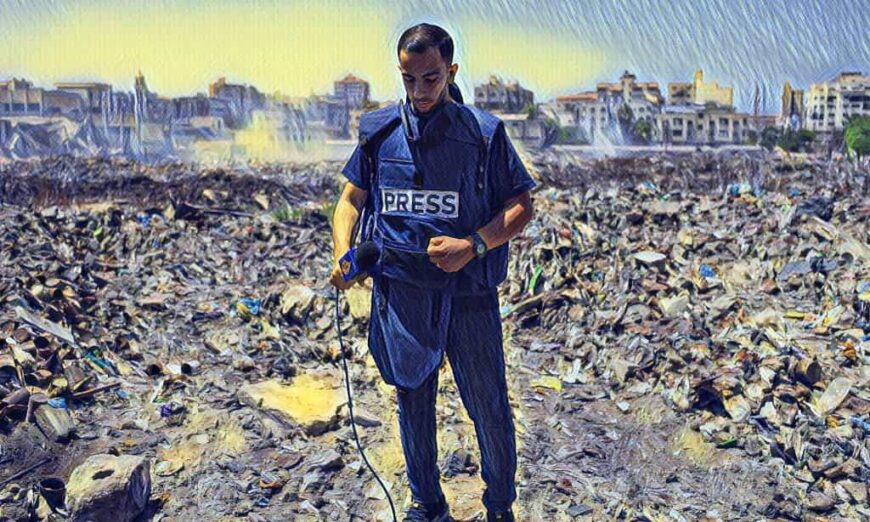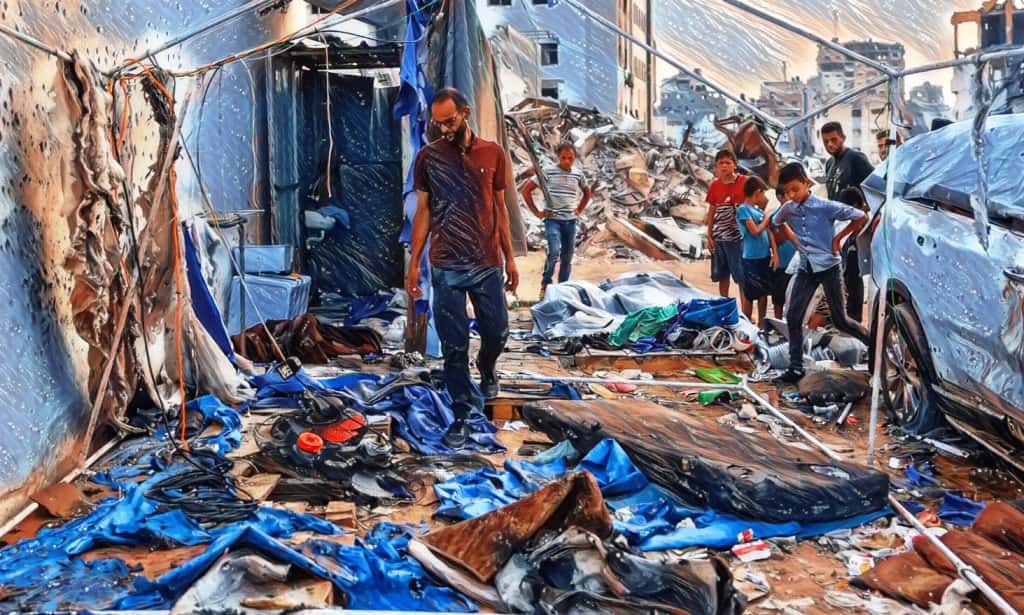 Reading Time: 3 minutes
Reading Time: 3 minutes
Last month’s aerial assault that took the life of Palestinian TV reporter Anas al-Sharif has serious implications for civilian protection and freedom of the press in armed conflict. Al Jazeera cameraman Anas al-Sharif, aged 28, and four other journalists lost their lives as the press tent near a hospital in Gaza in which they were working came under attack from an air strike, sending shock waves around the globe.
Sharif had been submitting reports from Gaza since the beginning of the war, writing about civilian deaths and humanitarian emergencies. His reporting, like much of other war reporting, involved enormous risk at a personal level in efforts to get dispatches to readers elsewhere in the world.
Following the strike, Al-Sharif’s government accused him of being both a Hamas militant and a journalist. The documents submitted seemed to confirm his recruitment in 2013 at the age of 17. The freedom of press organizations, however, raised doubt about the nature and the timing of the accusations as they came after his death.
These grievances have some analytic challenges as well. First, Hamas is in power in 2013, so some form of civic engagement is expected in citizens. Second, many of the world’s press have militaries in their histories that have had no effect on journalistic professionalism. Same standards applied in selective ways are questionable in terms of press credentialing consistency.
That broader context is more disturbing still. At least 192 media staff have died in Gaza since October 2023, the Committee to Protect Journalists reports. The figure is one of the highest rates of killings of journalists in any presently ongoing war zone to date, suggesting hitherto unprecedented risk or targeting.
International law gives extra protection to journalists in times of war. Assaults on journalists are war crimes unless journalists are participating directly in hostilities, as set by the Geneva Conventions. Evidence of military participation typically comprise the positive evidence of military participation, presented openly prior to the necessary legal proceedings.
He himself had complained in the world news media about insecurity, demonstrating that he himself knew that his work left him vulnerable. His colleague, Mohammed Mhawish, had already ceased to use press cards for identification since they emboldened more than they discouraged, a demoralizing unraveling of a decade’s safeguarding of the profession.
Internationally, the response has been relatively subdued compared to the worldwide response for targeting journalists for killing in other conflicts. International diplomatic complaints and continued news media scrutiny have followed the 2018 murder of Saudi author Jamal Khashoggi.Russian targeting of Ukrainian journalists in the same way has raised worldwide outrage and calls for explanations.

This extreme reaction implies that various standards depend on the nationality of the perpetrator or the victim. These unequal standards compromise international standards implemented in defense of press freedom and may in the long term provoke more attacks on the media.
Independent media coverage of crackdowns supports war strategies by limiting external observation of war. By the lack of media whose reports are legitimate from the sites of war, overall opinion relies heavily on accounts from warring parties, both of whom give reports prejudiced for each in turn.
Military operations in which media individuals are lost intentionally or by accident consistently create information vacuum areas whose advantage accrues to the operators. It is a new term for the phenomenon that occurred in earlier wars where information control happened to be an objective strived for.
Journalist professional bodies have called for there to be impartial, independent investigations into these assaults and there are avenues for redress that are in the public sphere. Until there are believable inquiries and something follows them, there is going to be continued targeting of media professionals.
It also gives rise to larger questions about civilian protection in wars over cities. If media personnel status is a risk factor, and not a protection, and if later charges filed are to be retrospectively invoked to justify killing, then the entire protection template for civilians is severely rusted.
For the future, the world must choose between calling for uniformity or freedom of the press and protection of civilians. Its effect on the nature of things must by necessity be the determiner of the fate of journalists and civilians in future wars with much higher stakes even than that one occurrence at the start would have us think.
Patterened character of Gaza journalist murders and mode and timing of accusations brought against the victims are patterns deserving serious international attention and investigation through appropriate legal channels.
